In the competitive landscape of mobile applications, understanding the importance of app discovery is paramount for developers and marketers alike. With millions of apps available across various platforms, making your app stand out becomes a crucial challenge. If your marketing efforts have long focused on increasing discovery of your company’s app, then recognizing the factors that contribute to effective visibility is essential.
App discovery refers to the processes and strategies that help potential users find your application among the vast array of available options. Here are a few reasons why it matters:
- Increased Visibility: A well-discovered app reaches a broader audience, leading to higher download rates.
- Enhanced User Engagement: When users can easily find your app, they are more likely to engage with its features and functionalities.
- Improved Brand Recognition: Consistent app visibility boosts brand awareness and loyalty, as users associate your app with their needs.
Investing time and resources into strategies that enhance app discovery can yield significant returns. From optimizing your app store listing with targeted keywords to leveraging social media marketing, each step taken in this direction contributes to your app’s overall success. Ready to elevate your app’s visibility? Book A Consultation Now!
Identifying Your Target Audience for Better Engagement

To effectively boost your app’s discovery and foster greater user engagement, it’s crucial to identify your target audience. Understanding who your potential users are allows you to tailor your marketing efforts, making them more relevant and impactful. Here are the key steps to identifying your target audience:
- Conduct Market Research: Utilize surveys, interviews, and focus groups to gather information about potential users’ preferences and behaviors. This data can provide valuable insights into the demographics of your target audience.
- Create User Personas: Develop detailed profiles that represent the characteristics of your ideal users. Include information such as age, gender, location, interests, and usage patterns to better understand their needs and motivations.
- Analyze Competitors: Studying similar apps can reveal the audience segments they cater to, helping you identify gaps in the market or unique value propositions that can attract your target audience.
- Utilize Analytics Tools: Leverage analytics platforms to track user behavior within your app. Analyzing data such as session length, engagement rates, and user demographics can help refine your understanding of your audience.
By taking the time to identify and understand your target audience, you can create more engaging marketing campaigns that resonate with users, ultimately enhancing your app’s discoverability and success.
Utilizing SEO Strategies to Enhance App Visibility

In today’s competitive app marketplace, employing effective SEO strategies is essential to enhance your app’s visibility and attract more downloads. By optimizing your app for search engines, you can significantly increase its chances of being discovered by potential users. Here are some key SEO strategies to consider:
- Keyword Research: Identify relevant keywords that your target audience is likely to use when searching for apps similar to yours. Use tools like Google Keyword Planner or App Annie to find high-traffic keywords and incorporate them naturally into your app’s title, description, and metadata.
- Optimize App Store Listing: Ensure that your app’s title and description are not only engaging but also keyword-rich. A well-crafted app description should highlight the core features and benefits while incorporating relevant keywords to improve search rankings.
- Encourage User Reviews: Positive reviews and ratings can enhance your app’s credibility and visibility in app stores. Encourage satisfied users to leave reviews, as this social proof can significantly influence new users’ decisions.
- Build Quality Backlinks: Promote your app through guest blogging, partnerships, and social media to generate backlinks. Quality backlinks can help improve your app’s authority and search engine rankings.
By implementing these SEO strategies, you will not only boost your app’s visibility but also increase its chances of being discovered by your target audience, ultimately driving more downloads and engagement.
Leveraging Social Media for Increased App Exposure

In the digital landscape, social media has emerged as a powerful tool for enhancing app visibility and engaging potential users. Leveraging social media effectively can significantly increase your app’s exposure and drive downloads. Here are some strategies to consider:
- Identify Your Target Audience: Understanding who your target users are is crucial. Research their preferred social media platforms and tailor your content accordingly to ensure maximum engagement.
- Create Engaging Content: Develop visually appealing and informative content that resonates with your audience. This could include graphics, videos, or interactive posts that highlight your app’s features, benefits, and unique selling points.
- Utilize Influencer Marketing: Collaborate with social media influencers who align with your app’s niche. Their endorsement can introduce your app to a broader audience and build credibility.
- Run Contests and Giveaways: Hosting contests or giveaways can generate buzz and encourage users to share your app with their networks. This can lead to organic growth and an increase in downloads.
- Engage with Your Audience: Actively interact with users by responding to comments, messages, and feedback. Building a community around your app can foster loyalty and encourage word-of-mouth promotion.
By leveraging social media, you can create a buzz around your app, boost its visibility, and engage directly with potential users, all of which are essential components for driving downloads and fostering a loyal user base.
Implementing Effective User Acquisition Techniques

Implementing effective user acquisition techniques is vital for the success of your mobile app. A strategic approach not only enhances visibility but also ensures that your app reaches the right audience. Here are several techniques to consider:
- Optimize App Store Presence: Your app’s listing plays a significant role in user acquisition. Focus on optimizing your app title, description, and keywords to improve your app’s ranking in app stores. High-quality visuals and compelling copy can significantly impact download rates.
- Leverage Paid Advertising: Invest in targeted advertising through platforms like Google Ads or social media. By using demographic filters, you can reach potential users who are more likely to engage with your app, thus maximizing your marketing budget.
- Referral Programs: Encourage existing users to refer your app to their friends and family. Offering incentives such as in-app rewards or discounts for both the referrer and the new user can boost your user base effectively.
- Content Marketing: Create valuable content around your app’s theme or purpose. Blog posts, videos, and tutorials not only educate potential users but also improve your app’s visibility on search engines, driving organic traffic.
- Analyze User Data: Utilize analytics tools to track user behavior and identify what methods are working. Analyzing this data can help you refine your acquisition strategies and focus on the most effective channels.
By implementing these user acquisition techniques, you can create a robust strategy that not only attracts users but also retains them, ultimately leading to the long-term success of your mobile application.
Measuring Success and Adjusting Marketing Strategies
Measuring the success of your marketing strategies is essential to ensure that your efforts are yielding the desired results. By employing the right metrics and tools, you can gain insights into your app’s performance and user engagement, allowing you to make data-driven adjustments. Here are key aspects to focus on:
- Key Performance Indicators (KPIs): Establish clear KPIs such as download rates, user retention, and engagement levels. These metrics will help you assess the effectiveness of your marketing campaigns and identify areas for improvement.
- Analytics Tools: Utilize analytics solutions like Google Analytics or Mixpanel to track user behavior, acquisition channels, and conversion rates. These insights can inform your marketing strategies, ensuring you allocate resources effectively.
- A/B Testing: Implement A/B testing for various marketing elements, such as ad copy, visuals, and app store descriptions. This approach allows you to determine which variations resonate best with your audience and optimize accordingly.
- User Feedback: Actively seek feedback from your users through surveys or reviews. Understanding their needs and preferences can help you refine your marketing strategies and enhance your app’s features.
- Adjusting Strategies: Based on your findings, be prepared to pivot your marketing strategies. If certain channels are underperforming, allocate your budget to more successful ones or try new approaches to reach your audience.
By continuously measuring success and adjusting your marketing strategies, you can ensure that your efforts remain aligned with user expectations and market trends, ultimately enhancing the discovery and success of your mobile app.
